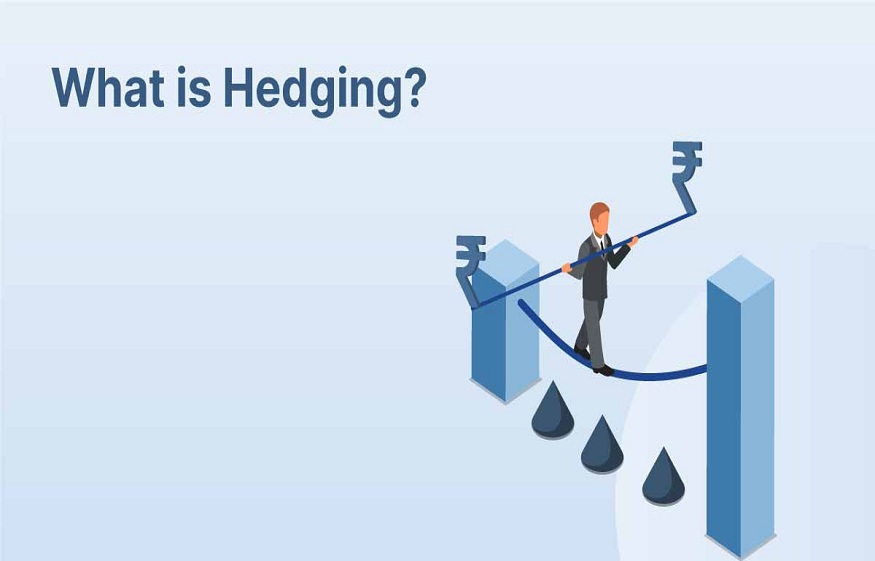A hedge is a strategy invented to lessen the possibility of an unfortunate price variation in an asset. Apart from safeguarding investors from different kinds of risks, hedging is well known for making the market run more effectively, even on bad days. It can be a useful method for all kinds of investors; find out why in this post.
What is Hedging and How Does it Work?
Hedging is an approach to safeguarding one’s investments from losses due to market volatility. If you experience losses in your first investment position, you can balance them out with the gains from the second. This will help protect your portfolio from the effects of unpredicted risk.
Hedging is a beneficial concept for investors to follow as it helps them handle unpredicted risks in their portfolios. Investors should be aware that hedging also involves costs and potential drawbacks. The costs of hedging, which are the fees and commissions, will be able to destroy the investment slowly over time, and that is why every investor needs to be sure of their strategies before making a move. Hedging strategies can be complicated and tend to require a high degree of experience and knowledge.
In simple words, to answer what is hedging is an approach that aims to reduce risks that you might face by investing in financial assets.
Types of Hedging Strategies to Know
Each kind of hedging strategy has its merits and demerits. Investors must be aware of their risks, investment goals and market regulations before picking a hedging plan. The table below will help you understand the types of hedging:
| Types of Hedging | Description |
| Options Hedging | Options are contracts that give buyers the right, but not the obligation, to buy or sell an asset at a pre-organized price before or on a specific date. Investors can use options contracts to hedge against losses or lessen potential growth. |
| Futures Hedging | Futures contracts are agreements used by investors to buy or sell an asset at a future date and time at a pre-organized price. Investors can use these contracts to hedge averse to the changes in price in the future of the underlying asset. |
| Currency Hedging | Investors use currency hedging strategies to safeguard from variations in foreign exchange rates. This strategy involves using financial tools such as futures contracts, options contracts, or even forward contracts to lock in a particular exchange rate. |
| Forward Contract Hedging | Forward contracts are more similar to futures contracts but are customised contracts between the two parties. They involve the matter of selling or buying an asset at a particular time or price in the future. |
|
Pair Trading |
This strategy involves taking long and short positions in two largely matched-up securities at the same instant. Pair trading is used to profit from a difference in price between the two securities while reducing the overall market risk. |
Factors to Consider Before Hedging
Since hedging is a risk management strategy, you need to make sure you use these strategies with perfection. There are just a few factors you need to consider to attain this perfection:
- One of the main factors to know before hedging is the cost. Hedging consists of taking a supplemental position, which denotes additional transaction costs, such as fees and commissions. These costs merge into your profits; hence, it’s essential to clearly understand the costs that are involved in any of the hedging strategies.
- The type of hedge you choose is also an essential factor to consider before hedging since various kinds of hedging strategies involve their own perks and drawbacks.
- The timing of the hedge is a key factor to consider, as hedging too early or too late can lead to missed results. For instance, hedging too early may prevent you from making possible profits if the market tends to move in your favour. Despite that, hedging too late could prevent you from safeguarding your positions from any loss.
- It would help if you also considered currency pairs as an important factor before hedging, some currency pairs are more evaporative compared to others, which indicates that hedging might be more or less fruitful based on the currency pair which is being traded.
Hedging is one of the most successful risk management strategies to date, but it’s essential to be aware of all the above mentioned factors that are involved before you can execute any hedging strategy.
Advantages of Hedging
- Hedging strategies give traders the opportunity to adjust flexibly to the moving market conditions.
- Hedging helps traders indulge in more trading opportunities, which leads to fearlessness towards high risks. It helps them take advantage of both rising and falling market variations.
- Hedging permits all traders to safeguard their positions from highly volatile market movements, which leads to effectively lessening the possibility of notable losses.
- Hedging plays a crucial role in maintaining capital by successfully diminishing the influence of market changes.
- This strategy will ensure the diversification of a trader’s portfolio by balancing out the risks in various currency pairs. This diversification tends to lessen the overall susceptibility of the portfolio either to a single currency or market.
You should also be well aware of the factors to keep in mind before you begin to use hedging strategies. This will help you make firm decisions and protect your portfolios from high risks that may occur due to various market movements.
Conclusion
To sum up, hedging strategies play a vital role in risk management investments and strengthening portfolio resilience. By diversifying portfolios, using derivative tools, and executing different hedging techniques, investors can confidently and controllably avoid bad market conditions.

